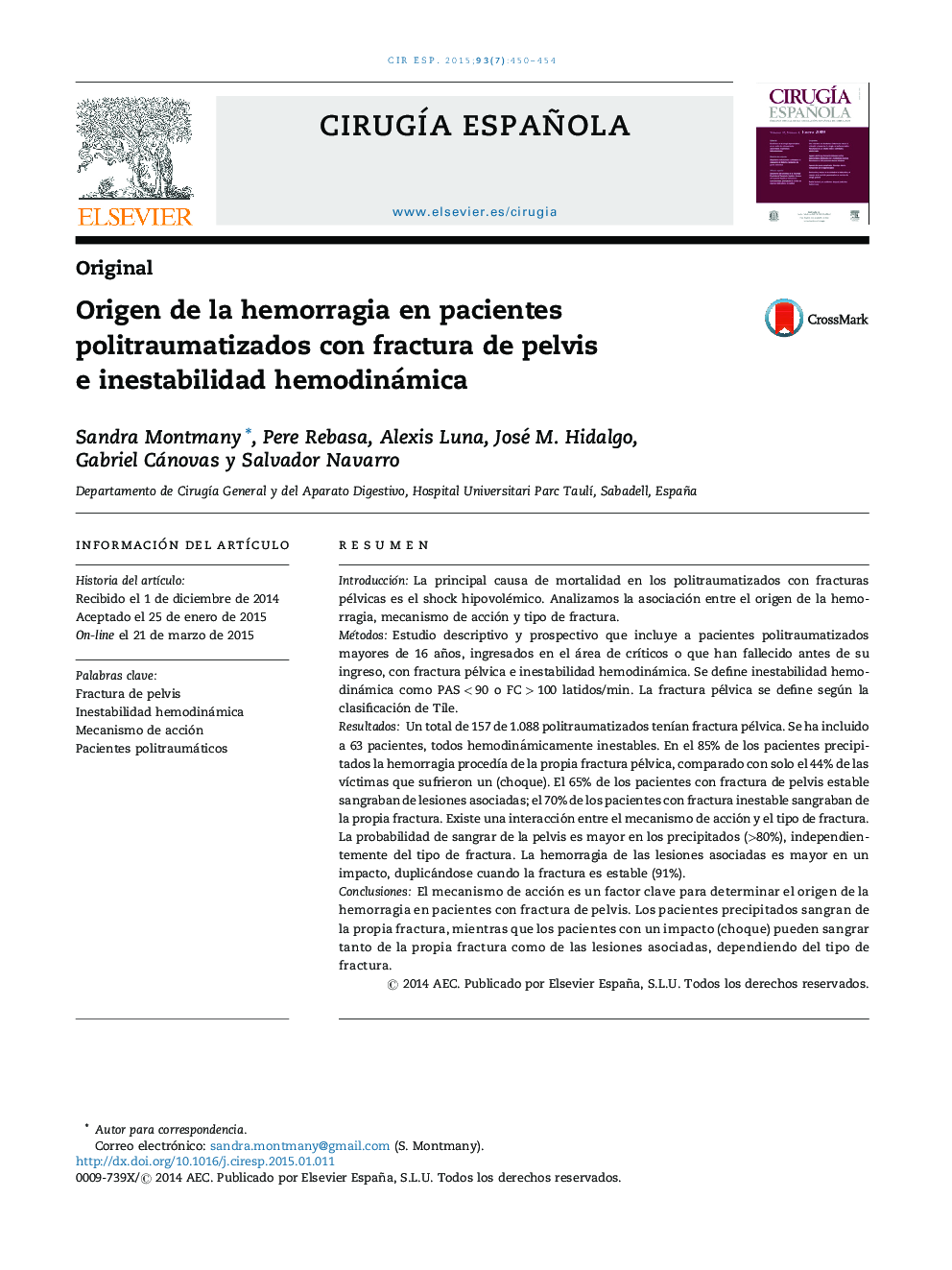| Article ID | Journal | Published Year | Pages | File Type |
|---|---|---|---|---|
| 4252223 | Cirugía Española | 2015 | 5 Pages |
ResumenIntroducciónLa principal causa de mortalidad en los politraumatizados con fracturas pélvicas es el shock hipovolémico. Analizamos la asociación entre el origen de la hemorragia, mecanismo de acción y tipo de fractura.MétodosEstudio descriptivo y prospectivo que incluye a pacientes politraumatizados mayores de 16 años, ingresados en el área de críticos o que han fallecido antes de su ingreso, con fractura pélvica e inestabilidad hemodinámica. Se define inestabilidad hemodinámica como PAS < 90 o FC > 100 latidos/min. La fractura pélvica se define según la clasificación de Tile.ResultadosUn total de 157 de 1.088 politraumatizados tenían fractura pélvica. Se ha incluido a 63 pacientes, todos hemodinámicamente inestables. En el 85% de los pacientes precipitados la hemorragia procedía de la propia fractura pélvica, comparado con solo el 44% de las víctimas que sufrieron un (choque). El 65% de los pacientes con fractura de pelvis estable sangraban de lesiones asociadas; el 70% de los pacientes con fractura inestable sangraban de la propia fractura. Existe una interacción entre el mecanismo de acción y el tipo de fractura. La probabilidad de sangrar de la pelvis es mayor en los precipitados (>80%), independientemente del tipo de fractura. La hemorragia de las lesiones asociadas es mayor en un impacto, duplicándose cuando la fractura es estable (91%).ConclusionesEl mecanismo de acción es un factor clave para determinar el origen de la hemorragia en pacientes con fractura de pelvis. Los pacientes precipitados sangran de la propia fractura, mientras que los pacientes con un impacto (choque) pueden sangrar tanto de la propia fractura como de las lesiones asociadas, dependiendo del tipo de fractura.
IntroductionThe main cause of mortality in trauma patients with pelvic fractures is hypovolemic shock. We analyzed the association between the source of bleeding, mechanism of action and type of fracture.MethodsProspective descriptive study involving trauma patients older than 16 years old, admitted to the intensive care unit or dead before admission, with pelvic fractures and hemodynamic instability. Hemodynamic instability was defined as SBP <90 and/or HR> 100 beats/min. Pelvic fracture was defined by the Tile classification.ResultsA total of 157 of 1088 trauma patients had pelvic fracture. We included 63 patients, all hemodynamically unstable. A total of 85% of pelvic fractures after falls from great heights bled from the fracture itself, compared to only 44% of victims of impact (hit). A total of 65% of patients with stable pelvic fracture bled from associated lesions; 70% of patients with unstable fracture bled from the fracture itself. There is an interaction between the mechanism of action and type of fracture. The probability of pelvic bleeding is higher in the precipitated patient (> 80%) regardless of the type of fracture. Bleeding from associated injuries is greater in impact victims, doubling when the fracture is stable (91%).ConclusionsMechanism of action is a key to determine the source of bleeding in patients with pelvic fracture. After falls patients bleed from the fracture itself, while patients with an impact (hit) can bleed both from the fracture and associated injuries, depending on the type of fracture.
